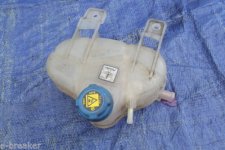All the cars with header tanks up high are self bleeders - the air can escape upto the highest point
As youve sed, puntos it gets trapped
I found when refilling the nose needs to be right up to help bleed trapped air
Wanna see how youve fitted / plumbed it up
In thoery all you need is 2 pieces and some tube and clamps
Ziggy
Hi Ziggy! Well as you know we have not seen eye to eye on the need for particularly careful bleeding of these cars. My old theory being if the car is properly maintained you do not need any fancy bleeding as eventually the air will arrive at the radiator.
I noticed this morning after tightening a few clamps there was no gurgling so the old theory seems possibly true.

However, I have ordered a header tank and will have a go at fitting it.
In theory I only need
one tube of the two on the header tank and it does not matter how low it is fitted to the existing cooling system. The air will always make its way
eventually to the highest point where the pressure is the lowest via diffusion- just like a home heating radiator system.
I am expecting after the install there will be some air accumulating at the top of the radiator filler cap but once the system has been cycled a few times this air will get transferred
eventually by diffusion to the header tank.
The easiest point for me to connect the header tank is by the after market DEF 240V water heater used for starting on cold mornings if the car has been left out in freezing weather. The water heater is at the level of the steel return pipe to the water pump.
So the fitting procedure will be:
1. Blank off the smallest pipe on the new header tank.
2. Drain the cooling system.
3. Replace the straight connector by the DEF water heater with a T connector that connects to the header tank
4. Fill up the car in the normal way - but I wont bother to open the heater bleed screw as it is siliconed in.
5. Run the car and top up the radiator via the existing radiator cap.
6. Top up the radiator to the level of the existing radiator cap - totally full - and put the radiator cap on.
7. Fill the new header tank to the max line with the cap off.
8. Squeeze the top radiator hose to get rid of the air in the header tank pipe.
9. Place pressure cap on the header tank.
So the plan is, even though the air will not easily bubble up the single pipe to the header tank it can make its way to below the existing radiator cap and then eventually via diffusion it will move to the new header tank.
Possibly I might need to disable the radiator pressure cap - at the moment I am assuming there will be very little fluid coming thru that valve in normal use.



